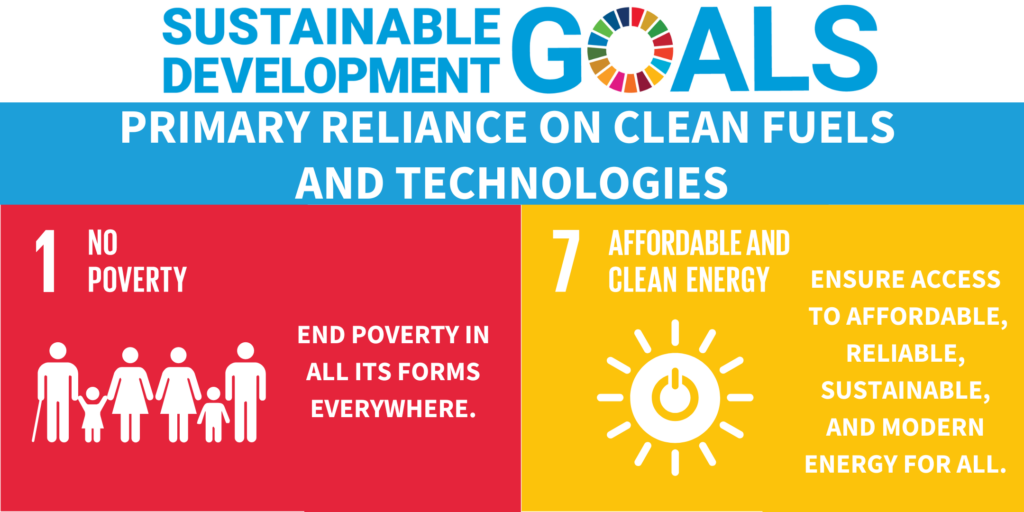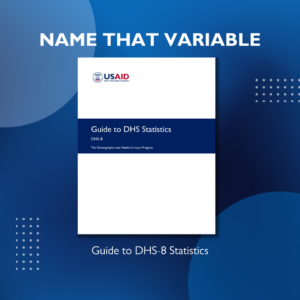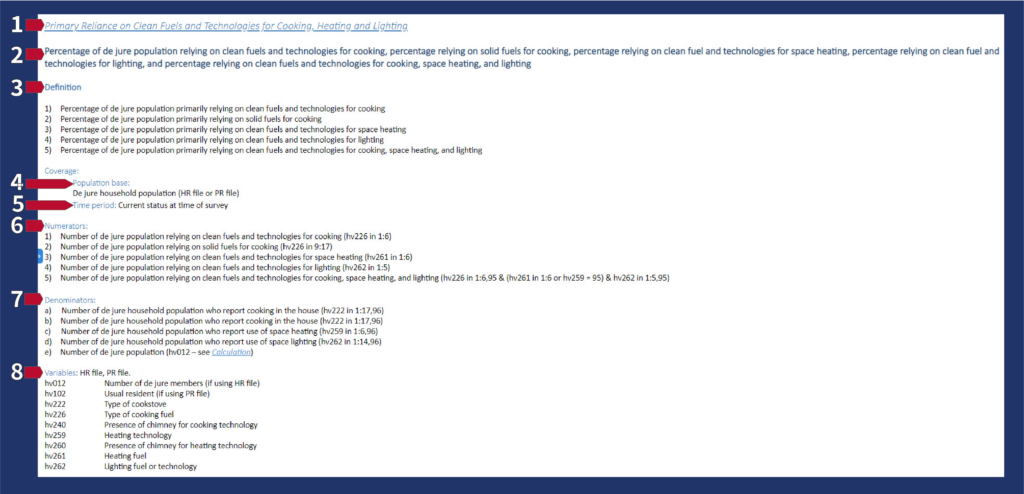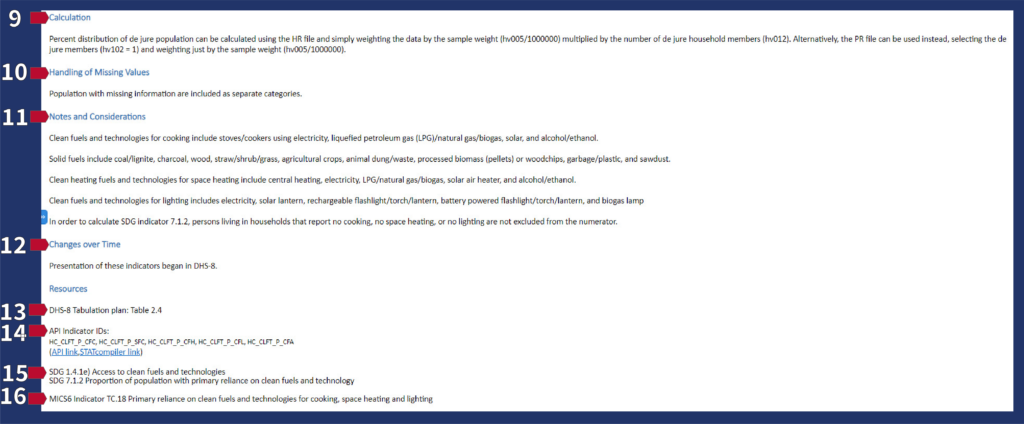Anatomy of an Indicator: Guide to DHS Statistics

DHS Program data are collected so they can be used to guide programs and policies to improve health and well-being. In addition to making DHS Program data publicly available free of charge, The DHS Program also provides tools to help data users better understand, interpret, and use DHS Program data. The recently released Guide to DHS Statistics has been updated to reflect the changes and additions made to indicators as part of DHS-8, and provides detailed indicator information for 275 indicators collected in DHS Program surveys. Let’s take a closer look at one indicator.

Primary reliance on clean fuels and technologies is the indicator collected in DHS surveys that corresponds to Sustainable Development Goal (SDG) Indicator 1.4.1, the proportion of the population living in households with access to basic services, and SDG Indicator 7.1.2, the proportion of the population with primary reliance on clean fuels and technology. ‘Basic services’ has several components including access to clean fuels and technologies. A wealth of information can be found about this indicator in Chapter 2 of the Guide to DHS Statistics. Let’s break down the anatomy of this indicator entry to get to know The Guide to DHS Statistics.
Each indicator entry includes:
- The brief name of the indicator or indicators.
- The complete title of the indicators in a single statement.
- Definitions of each indicator listed separately. Primary reliance on clean fuels and technologies is made up of five different indicators.
- Coverage summarizes the population base and time period of the indicators. Since primary reliance on clean fuels and technologies is a household-level indicator, it covers the de jure household population, or usual household residents. The datasets for this population are also noted (e.g., HR, the household recode file and PR, the household member recode file).
- The time period to which the indicators apply. Primary reliance on clean fuels and technologies describes the household population’s current reliance on clean fuels and technologies. Time periods for some other indicators include the night before the survey, the two years before the survey, or any time before the survey.
- Numerator(s) for the indicators are listed, including the criteria for selection for the numerator based on the variables in the recode file. Unless noted, the criteria for the numerator(s) are a subset of those selected for the denominator and selection criteria for the denominator is not usually repeated in the numerator.
- Denominator(s) including the criteria for selection for the denominator based on the variables in the recode file. If no criteria are specified, the denominator is formed of all cases in the dataset.
- The list of variables needed to calculate the indicator and the datasets where these variables are found. The variables section does not include background variables (e.g., age, residence) to disaggregate the indicator.
- An explanation of the calculation of the indicators, typically based on the numerator(s) and denominator(s) defined above in items 6 & 7.
- An explanation of how missing values and “Don’t know” responses are handled for the indicator.
- Any notes and/or considerations applicable to the indicator(s).
- A brief description of the ways in which the indicators have changed over time between the different phases of The DHS Program.
- Any references and resources relevant to the indicator including the table number reference to the DHS-8 tabulation plan.
- Application Programming Interface (API) indicator IDs including indicator-specific links to the API and STATcompiler.
- Sustainable Development Goal indicator numbers, if applicable.
- Multiple Indicator Cluster Survey (MICS) indicators numbers, if applicable. Primary reliance on clean fuels and technologies is also a MICS6 indicator.
The Guide to DHS Statistics is an essential tool for all DHS data users. It can aid those who are just starting out in data analysis, be used by those whose skills are more advanced for checking procedures, and is a reference document for all who deal with data generated by The DHS Program surveys. In addition to detailed information for all 275 indicators, the Guide to DHS Statistics provides an overview of DHS data file structure, recode files and variable naming, sampling design, sampling weights and sample stratification, century day codes, century month codes, and other created variables, matching and merging datasets, adjustment factors employed in surveys in which only ever-married women are interviewed, and background variables used in tabulations.
Stata, SPSS, and R code for calculating the indicators found in the Guide to DHS Statistics can be found on The DHS Program’s Code Share Library on GitHub.
Updating the Guide to DHS Statistics was an enormous effort, involving over 50 people who contributed to this or previous versions. Many thanks to everyone who contributed to this guide for their valuable input! The Guide to DHS Statistics is available as a downloadable PDF and an interactive web interface.
Test your knowledge of DHS indicators to find out if you’re a Variable Novice or a Variable Expert! It’s time to play…
Name That Variable
In honor of the recently released Guide to DHS-8 Statistics, we’re introducing a new game: Name that variable!

Feature image: © inspiringteam.com / Adobe Stock



